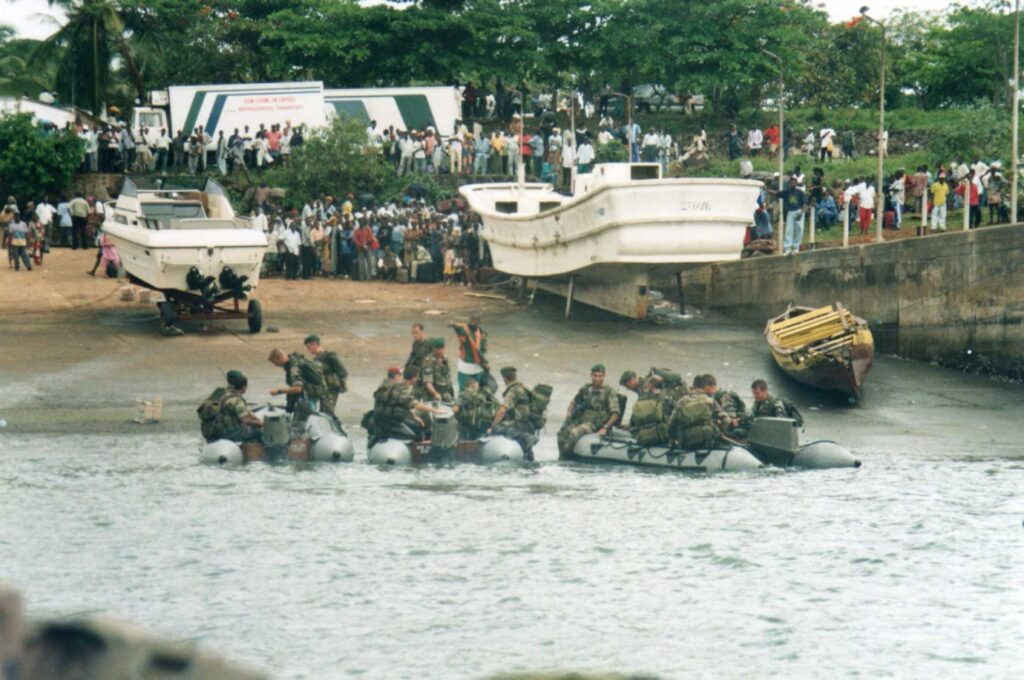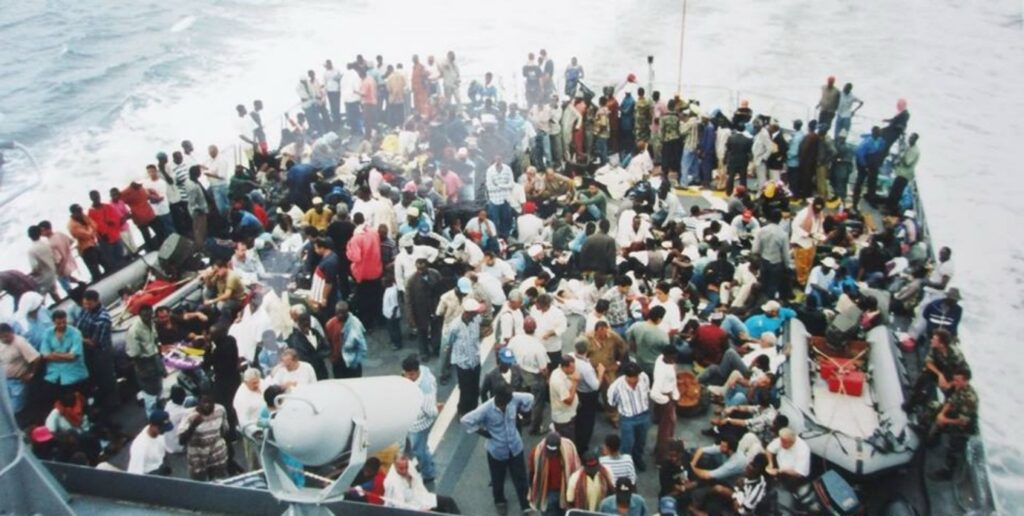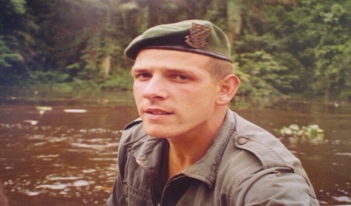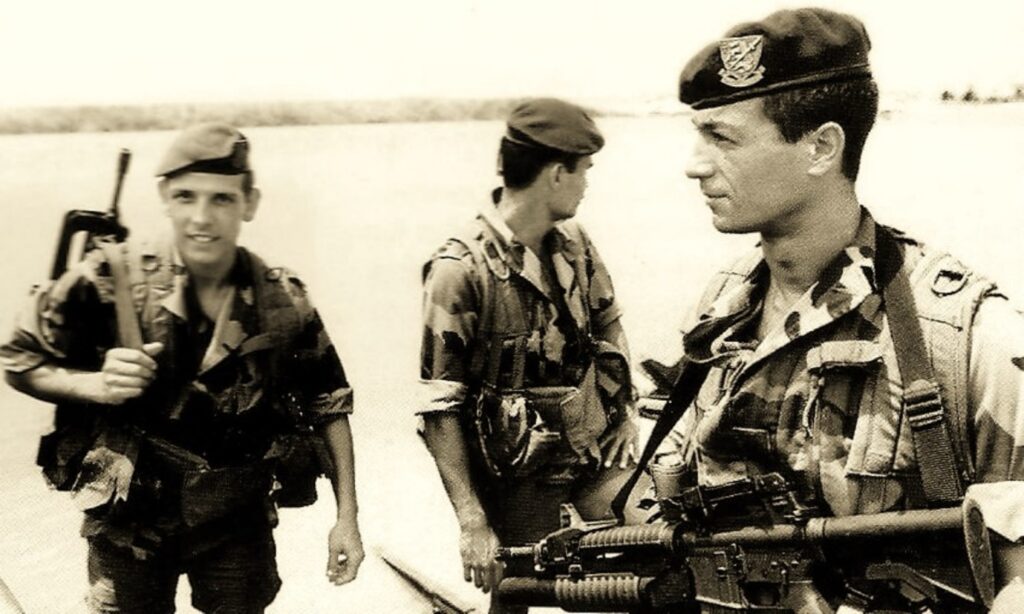By Serge Kurschat
At the dawn of the 21st century, Sierra Leone was in the midst of economic and social depression. Endless, bloody and brutal wars taking place. Through a unique and disconcerting double look, at the military side and the population side, the author highlights the workings and games of war.
“It is not enough to show just one side of the soldier, that of the bloodthirsty killer and war criminal, as some people like to present him. We must also, without idolising him, highlight the soldier who saves lives. Violence breeds violence and only leads to countries ravaged by absurd wars”.
With these few lines, I would like to pay tribute to 19 of my brothers-in-arms who saved more than a thousand people of 21 different nationalities and all religions in one day during the civil war in Sierra Leone in 1997. I would also like to pay tribute to them for the thousands of lives we saved from agony and disarray during the civil war in the Congo. Two fratricidal civil wars that were bloody and brutal.
On 2 June 1997, following a coup d’état in Sierra Leone, on the Aberdeen peninsula in Freetown, 20 men from the Commando de Montfort – the marine commandos, an elite unit of the French special forces – saved more than a thousand people of 21 different nationalities and all religions from certain death: Operation Espadon was born.

We had already been involved for several weeks in the former Zaire on the Pelican 1 mission – the rescue of several foreign nationals – and we were called in urgently to intervene in Sierra Leone.
All day long, there’s a constant ballet of commando boats transporting the nationals and evacuating them to French military vessels. There are men and women of all ages, including children.
They were repatriated on the aviso Jean Moulin and the frigate Germinal and landed in Conakry, Guinea.
Some days, you just want to save a life… or two, or a thousand. This was D-Day! It was 2 June 1997. In the early morning light, we were charged with one of the most perilous missions of our lives. It was a particularly delicate one. The day our lives would be turned upside down. Heavy casualties were expected. Some said forty per cent. The preparations had been carefully made. There were many rifles, well-greased and arranged by category. That grey morning, the zodiacs were launched and we set off to attack this new shore. We were heavily armed and didn’t yet know what we were up against. Our universe was limited to this place, cut off from the rest of the country.

In the water, we would have had no hope. To tell the truth, during our nautical ballet, we were a privileged target. It was a fragile moment, knowing that the French Navy vessel was a few miles offshore in the neutral zone. With each passing moment, with each person rescued, we felt an intense and unspeakable emotion—a mix—ae of joy and fear.
When we arrived at the port of Aberdeen in Sierra Leone, we found a huge crowd waiting for us. The Aberdeen district, located at the tip of the Freetown peninsula, was a fishing zone.
A few minutes later, the incessant nautical ballet of commando boats, the famous zodiacs, began. They were transporting nationals to evacuate them to the French military ships, then returning to the construction slipway to load new nationals, who were candidates for departure. There were men and women of all ages and children. Some were screaming, others crying, all calling for help. They were frightened, anxious, terrified and, in some cases, traumatised. The operation was supposed to last all day.
The authorities had negotiated a ceasefire, but we were on our guard. At almost any moment, we could look up and see the rebels.
Be that as it may, we Green Berets had to secure the area, aware that a rebel ambush could happen at any moment. We were on the lookout for the slightest danger. A breach of the ceasefire could occur at any moment, putting the lives of all the civilians at risk, as well as those of the twenty Green Berets.
At the end of the day, we headed for the quay. Having rescued some one thousand European, African and Lebanese nationals – a total of twenty-one nationalities – we left the shores of Freetown having filled two French Navy frigates.
To this day, there has been no official recognition. It went unnoticed by history.”
About the Author

Serge Kurschat is a French historian. Entrepreneur, business manager and writer, Serge Kurschat was also a columnist on the website of the newspaper Le Temps.
He comes from a family of four generations of soldiers. He is a former member of the special forces, who belonged to the elite unit of the marine commandoes of the French National Navy: he is one of the 20 marine commandoes who saved more than a thousand people in one day during the Sierra Leonean civil war in 1997. He also took part in the evacuation of several thousand foreign nationals to Ex-Zaire during the Congo-Brazzaville civil war.
